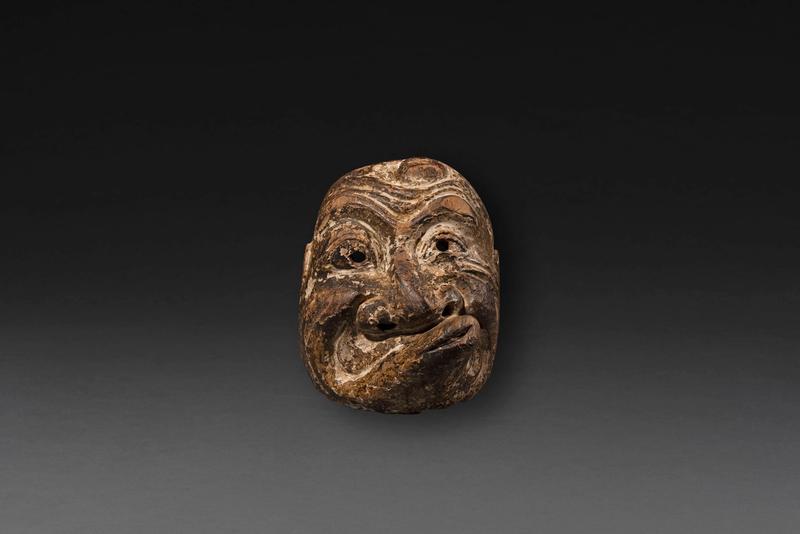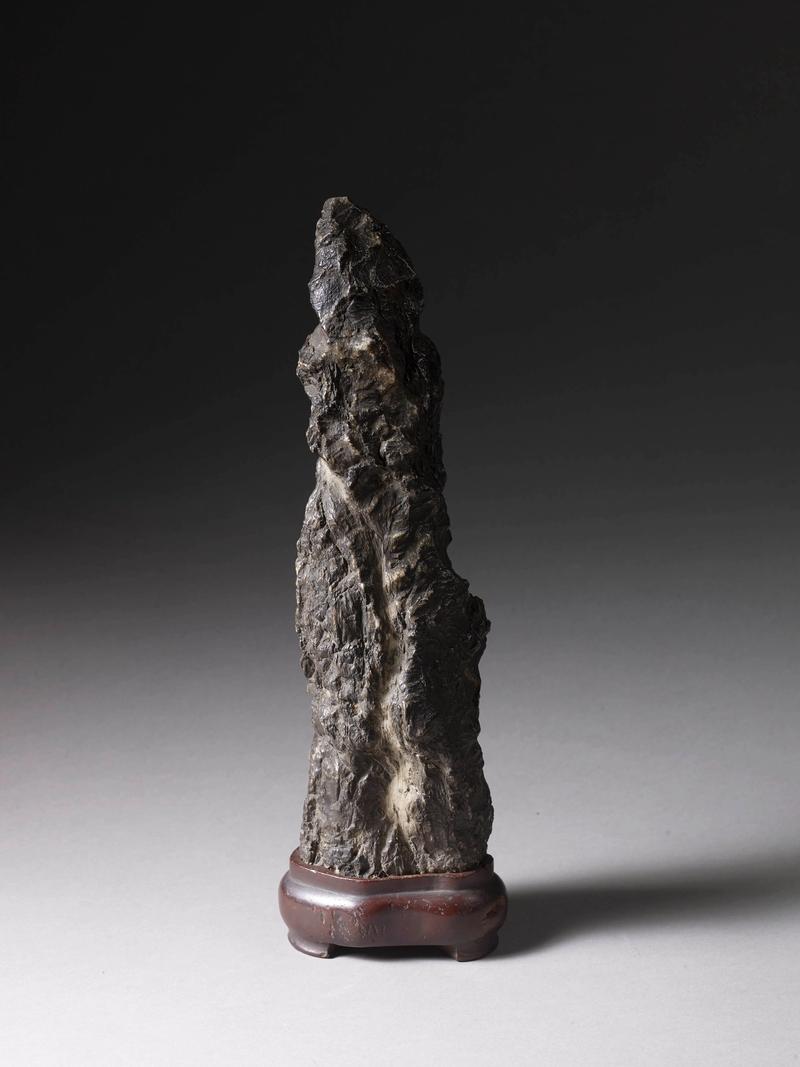A wood Nohmask of Koomote.
Japan, 17th century, Edo period.
Koomote (lit. ‘small face’) is one of the most common types of onnamen (women’s masks) used in Japanese traditional Noh theatre. The face with engaging, gentle smile represents the innocent beauty of a young lady and is used for both main and supporting roles portraying young women and girls. Based on the beauty ideal of aristocratic ladies of the Heian period (794-1185), the mask is painted in whitish colour, the smiling red lips reveals teeth in black (called ohaguro), the smudge-like eyebrows are painted, and the black hair is neatly combed and parted in the middle with three hair along each side of the forehead.
Works of Art

A kakebotoke

A wood Kyōgen mask of Usobuki

A Chinese Suiseki (viewing stone)

A bronze flower vessel of mimikuchi

A pottery kake hanaire (hanging flower vessel)

A red lacquer Kamakura-bori dai-kogo (incense box)

A Lacquered Shield

A bronze brazier

A bronze hanging flower vessel

A Chinese bronze censer

A ceramic vase by Makuzu Kōzan II

A ceramic te-aburi (hand warmer)

A suiseki (viewing stone) of vertical form with a natural striation resembling a waterfall, with wood stand

A Tokoname storage jar

A bronze flower vessel

A wood Noh mask of Koomote

A black lacquer bon (tray)

A bronze brazier

An iron nyoi

A Tokoname storage jar







